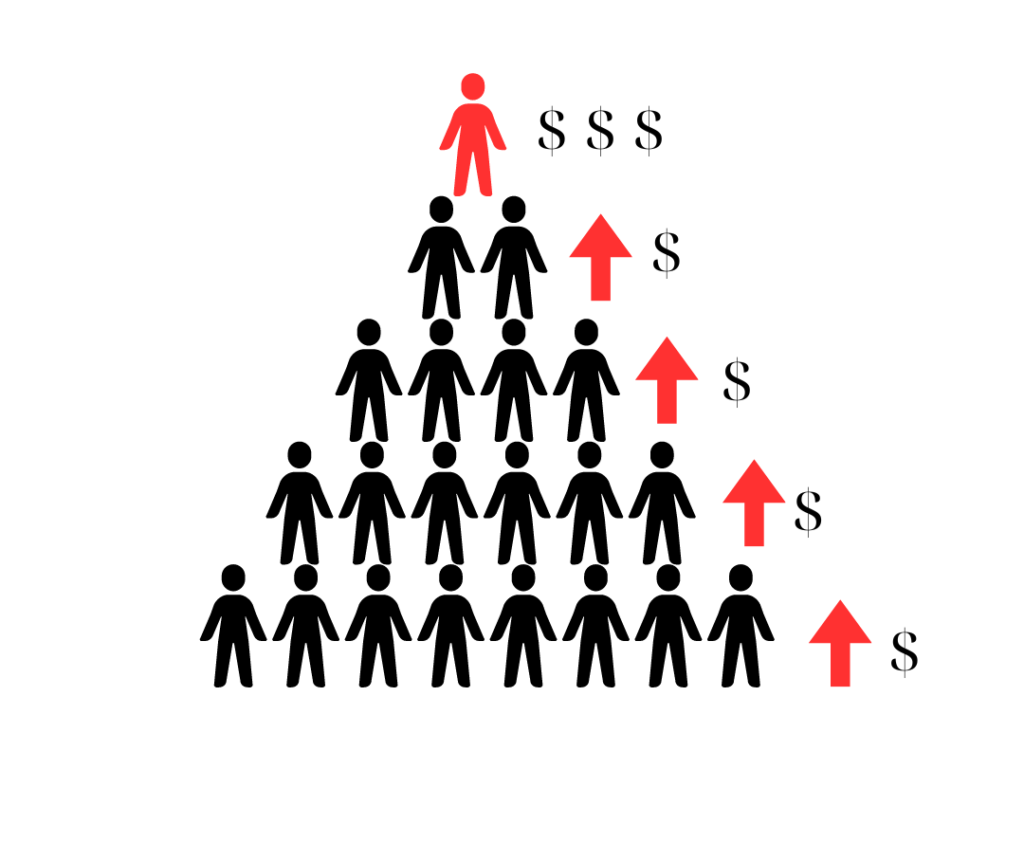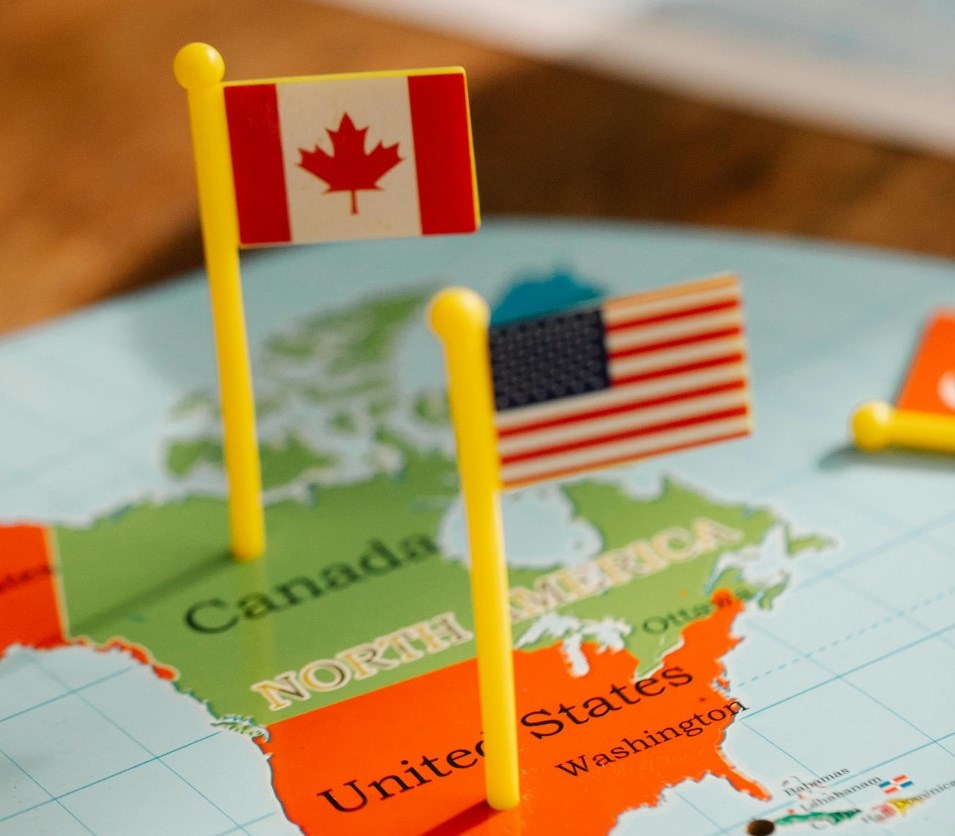DEI, wokeness, critical race theory, systemic racism, intersectionality and cultural appropriation.
Ten or twenty years ago, most of these terms were unknown, and some only existed inside academia or very limited circles of left-wing intellectuals.
Identity politics has since come to the fore. Before the millenium, just about the only term that was in common use for these types of issues was “political correctness” or its opposite, “politically incorrect” – which was also the name of Bill Maher’s original TV show that was cancelled. And by cancelled, I mean actually cancelled by the TV network rather than being the target of “cancel culture”. The show was scrapped not because he had displeased people on the left, but because he had spoken an uncomfortable truth about 9/11.
Political correctness is currently defined as “conformity to prevailing liberal or radical opinion, in particular by carefully avoiding forms of expression or action that are perceived to exclude, marginalize, or insult groups of people who are socially disadvantaged or discriminated against”. The term was originally used as a put down by people on the right about the left, but now “woke” has largely displaced it, because identity politics has widened to include things far beyond expressions or actions. It now includes programs (or policies practiced by businesses, government, or institutions) that have become enmeshed in controversy, like DEI courses.
What is called “identity politics” exists on both the far left and the far right. It usually involves groups based on race, ethnicity, religion, sexual orientation/identity, disability, distinct and innate characteristics, political party, or something else that is not a conscious choice.
There are numerous books on the market with “woke” in the title, though most of them seem critical of wokeness and written by or for people on the right – even Vivek Ramaswamy has written one. None of the ones I have come across seemed worth reading because they appeared to be polemics, though one book did stick out.
Yascha Mounk is a German-American professor of political science at Johns Hopkins University, and author of several books that examine the risks to modern liberal democracy – including the rise of the authoritarian/populist right. Last year, he published “The Identity Trap: A Story of ideas and Power in our Time“, which looks at the rise of identity politics on the left since the 1970s.
Mounk uses the term “identity synthesis” to refer to the ideology behind “wokeness.” I don’t particularly like the term “woke” myself, but if nothing else, it has the advantage of being short.
The term “identity synthesis” seems unlikely to catch on with the public, but this is an eye-opening book on “wokeness.” It seems to be the first widely-reviewed book that looks in detail at the origins of left-wing identity politics in the US – though “The Coddling of the American mind: how good intentions and bad ideas are setting up a generation for failure” (published in 2018) did cover some of what has been happening on American campuses.
Here is a partial description of that book:
“First Amendment expert Greg Lukianoff and social psychologist Jonathan Haidt show how the new problems on campus have their origins in three terrible ideas that have become increasingly woven into American childhood and education: What doesn’t kill you makes you weaker; always trust your feelings; and life is a battle between good people and evil people. These three Great Untruths contradict basic psychological principles about well-being and ancient wisdom from many cultures. Embracing these untruths – and the resulting culture of safetyism – interferes with young people’s social, emotional, and intellectual development.”

I think that reading both of these two books might be useful in understanding what is happening with younger people and students these days, including the pro-Palestinian protests on American and Canadian campuses. Polls show that young people on the left often have views that differ significantly from older people on the left – particularly on issues such as free speech, and not just on events in the Middle East.
Mounk’s book is split into four distinct parts. The first part of the book traces the origins of the identity synthesis, mainly back to several French/European intellectuals in the 1970s, and their rejection of Marxism, liberalism, universalism and the idea of there being any great over-arching “grand narratives”.
Some people on the far, far right use the term “Cultural Marxism” when criticizing many “woke” policies, but in fact, the identity synthesis which Mounk analyzes is based on a rejection of Marx – though there are similarities in world view. What the identity synthesis does is to reject “economic class”, and substitute it for membership in any one of the various identity groups instead.
Another huge difference is that with Marxism, there is some utopian future where economic classes disappear, but this is not seen as a possibility in the identity synthesis since groups are based on race, sexual orientation, religion, and so on.
The identity synthesis also rejects liberalism – though Mounk’s book ignores neoliberalism and liberal economic issues. Instead, the book focuses on the rejection of social liberalism and the concepts which form the foundations of liberal democracy. To those who have embraced what Mounk calls the identity synthesis, the ideas of Martin Luther King and others in the US Civil Rights movement are seen as passé or naïve.
The 1950s era Civil Rights movement rejected the idea of “separate but equal”, which in practice was extremely unequal. However, because the Civil Rights movement was unable to achieve perfect equality, proponents of today’s identity synthesis believe in segregation as a solution – like having all black schools or classes instead of integration. For example, despite the removal of laws that lead to blacks being limited to living in neighbourhoods segregated from whites, US neighbourhoods and schools are still very racially segregated because of the cumulative choices made by individuals.
Part I of the book looks at how the identity synthesis emerged in academia in the 1970s with philosophers or intellectuals (mainly Michel Foucault). Part II looks at how it spread rapidly after 2010 and became popularized, to the point that even big business in the US (like Coca-Cola) had no choice but to adapt to identity synthesis ideas and policies.
Then, Part III looks at the implications of the ideology and how it is counterproductive in practice. As a committed liberal, Mounk believes identity synthesis can be useful only as a tool to analyze issues of racism, discrimination, or marginalization – not as a means to address discrimination or marginalization. Part IV (and the Appendix) tries to provide a clear case for philosophical liberalism, including free speech. Mounk also tries to distill the identity synthesis down to its three core precepts, and explain how these differ from Marxism.
The identity synthesis evolved with no single guiding mind or theorist, so Mounk tries to distill it down to these statements:
- The key to understanding the world is to examine it through the prism of group identities like race, gender, and sexual orientation.
- Supposedly universal values and neutral rules merely serve to obscure the ways in which privileged groups dominate those that are marginalized.
- To build a just world, we must adopt norms and laws that explicitly make the way the state treats each citizen – and how citizens treat each other – dependent on the identity group to which they belong.
Mounk suggests that there is a simple way to show that this method of thinking is not Marxist: just replace references to identity groups with economic or social class in the above three statements.
Essentially, the world using the identity synthesis is seen only in black and white, with no grey, with groups and individuals divided into:
- oppressors versus the oppressed, or
- majorities or those with privilege versus people who are marginalized, discriminated against, and/or without power, even in liberal democracies with neutral policies.
Even if the source of oppression or marginalization has long since ended or been removed, the effects of oppression or marginalization might continue, and need to be addressed to reverse any lasting impacts. An example of this is how Black people in the US lack the wealth of whites, in part because of the periods when there was slavery, Jim Crow, and so on.
Mounk makes the case for free speech instead of (well-meaning) censorship – even self-imposed censorship. He argues that the problems of discrimination or unfairness that can identified by dividing the world into identity groups should instead be addressed by liberal approaches that are consistent with the universalist underpinnings and founding principles of liberal democracies.
Part of the problem, of course, is that if everybody in a society is divided into identity groups, then who decides who is or is not included in the marginalized groups? Who speaks for these groups, and how are they chosen?
For example, in the US, racial issues usually involve African Americans or Hispanics. Polls show most Hispanics don’t like to use Latinx, but this term is being pushed by some people to be the official term used by government and business – even though it is only an elite few who are demanding it.
Additionally, what happens if someone is a member of more than one marginalized group? This is where the term intersectionality originated, since it might not be as simple as being a member of two groups at once. Being Black and a woman creates unique problems that Black men and White women do not experience.
But Mounk describes how intersectionality went beyond this idea because of the possible complexities. It came to essentially mean that people who bought into the identity synthesis to support one identity group were forced to agree to support and advocate for all marginalized groups because “forms of oppression reinforce each other, and any effective form of activism against a particular injustice also needs to fight all the other forms of identity based oppression.”
This comes out of “standpoint theory” – which Mounk bases on four core ideas he defined from how identity politics on the left has been practiced:
- There is a set of significant experiences that (virtually) all members of (particular) oppressed groups share.
- These experiences give members of a group special insight into the nature of their oppression and other socially relevant facts.
- Members of the group cannot fully or satisfactorily communicate these experiences to outsiders, even in so far as they have important political implications.
- When an oppressed person makes political demands based on the identity its members share, outsiders should defer to them.
In effect, anyone who is not on-board cannot question or argue against a person who is considered oppressed, victimized or marginalized, if it is tied to their being a member of an identity group to which this theory applies.
The book is mostly focused on the US, but Mounk makes some references to Canada, the UK, and Australia. One example was how in Ottawa our National Arts Centre had an event meant to appeal to Black people, and people who aren’t Black were supposed to stay away.
Of course, in Canada the racial issues are mainly around indigenous peoples, or sometimes immigrants. Unlike the US, Canada had relatively few non-white, non-indigenous people prior to 1963. Mounk doesn’t have much to say on how the identity synthesis has been applied to indigenous issues in the US, let alone with things like our “Truth and Reconciliation” commission or the issue of graves at former residential schools.
There are other issues or themes that Mounk identifies as part of his definition of the identity synthesis: adherents are skeptical of any objective truth or genuine knowledge, pessimistic about the idea of progress, and tend to believe that racism is permanent.
Many affirmative action policies in the US, or reasonable limits to the Canadian Charter of Rights, are based on the idea that such programs will be temporary exceptions, and necessary only as a bridge to a time when they can be removed. This issue is often glossed over in practice. For example, are the policies surrounding reconciliation with indigenous peoples in Canada meant to be permanent? Are we creating a permanent race-based society that will give indigenous people special preferential treatment until Canada somehow disappears as a political entity, and long after they are seen as being at a disadvantage justifying special treatment?
The problem with implementing the identity synthesis is that it is fundamentally undemocratic. It is a one-way street based on victimhood, or being able to claim the moral high ground.
Members of groups that are seen as oppressor or victimizers are not allowed to even organize without being ridiculed. Men’s rights groups were an easy target. However, even though women were the ones most hurt by patriarchy and sexism being entrenched for millennia, fathers were often unfairly treated in divorces and had legitimate complaints.
There is a benefit to claiming to be part of an oppressed or marginalized group, so over time the number and type of identity groups will likely expand. For example, it occurred to me that the whole “generational unfairness” issue (young people blaming older generations for housing unaffordability and so on) is trying to piggyback on the identity synthesis. Since the 1950s Baby Boom, generations have been identified somewhat arbitrarily by specific dates. Some people like Paul Kershaw (and his “Generation Squeeze” website) have positioned young people as a disadvantaged/marginalized identity group, and the Boomers/seniors as the oppressors.
The identity synthesis doesn’t encourage a dialogue or reasoned debate by equals. Winston Churchill is sometimes credited with saying that “history is written by the victors”. History is now being written by the victims, or people who claim to be victims. There is no impartial court, however, to determine the objective truth about the past or how to rectify things in a way that is fairest for everyone. This is especially relevant since the historical figures who might have done wrong are long gone, and Canada is full of people whose ancestors were not even here during the time periods which are the subject of dissension today!
There is a risk in any democracy of a “tyranny of the majority” ignoring or oppressing minorities, but Canada has a Charter of Rights and an independent court system to protect members of small or weak groups from “mob rule” that might treat them unfairly. Yet, with the identity synthesis, we risk ending up with various tyrannies of the minorities.
Mounk explains that not all (or even many) members of the groups with privilege, or that are deemed to have been oppressors, will voluntarily accept shame and guilt, and then go along with the demands of those asking for change. This is especially the case since “standpoint theory” (discussed above) makes open debate and compromise impossible. The identity synthesis ignores the potential of a backlash.
The populist right is already exploiting the backlash in the US since the Tea Party emerged around 2009 – if not long before that, going back to Nixon claiming to represent a “silent majority”.
Yet in Canada, our federal political parties have been very timid in this regard, with the People’s Party of Canada polling poorly and being treated as a joke (if it is mentioned at all). But then, Canada’s politics is very top-down, unlike the US, and party elites can limit who becomes a candidate or MP through vetting and other means. We lack anything like a Fox News – though populist right wing media outlets are growing in influence, aided by the unpopularity of Trudeau.
What Mounk’s book makes clear is that there is a fundamental ideological split within the left in Canada and the US. This split is between traditional universalist liberals and democratic socialists on one hand, and the younger generations who have been influenced by the identity synthesis on the other. Justin Trudeau often talks the talk, and seems woke – but Trudeau, Jagmeet Singh, and Elizabeth May seem to be universalists at heart. But polling shows that with the under-30 age group, the Liberals do poorly while the NDP and Greens do much better.
The grass roots of the NDP and Greens push policy resolutions more in line with the identity synthesis than can be seen in the Liberal party convention policy resolutions. But Canada’s left (outside of Quebec) is even more split with socialists and environmentalists.
The latest Abacus poll showed that the Conservatives do worst with under-30s (33% of whom vote Conservative and 5% of whom are People’s Party voters, meaning that 62% of this age group vote Liberal or to the left). The political right is also split in Canada and the US – there are social conservatives, economic neoliberals, moderate conservatives (Red Tories). The right has universalists and communalists (communalists tend to be nationalists and for limits to immigration, and might even be inclined towards illiberal democracy, whereas others who are universalists – such as libertarians – support more open borders and support liberal democracy).
If universities continue to be dominated by the identity synthesis, then each year the proportion of people on the left buying into it will increase, particularly in urban areas and many suburbs.
Mounk’s book is worth reading. It contains a lot of fresh information about how identity politics on the left developed, its foundations and themes, and why it is generally a dead end. Reviews of the book have been very positive overall. I hope to see others build upon it, and particularly for a counter-movement to develop in universities to instill a more traditional liberal democratic viewpoint of politics.
The extreme political partisanship of the US, and increasingly in Canada as well, is partly a symptom of social media, and of the decline of traditional mainstream news media. However, the ideas and policies of those who have bought into the identity synthesis helped to create a backlash that the populist right is exploiting. This is because the identity synthesis not only does not appeal to the majority of voters, but because dividing the world into groups and then making people feel shame or guilt for being a member of a group is a sure way to drive most average voters away – including some who are members of marginalized groups who see the errors of this approach.
All content on this website is copyrighted, and cannot be republished or reproduced without permission.
Share this article!




The truth does not fear investigation.
You can help support Dominion Review!
Dominion Review is entirely funded by readers. I am proud to publish hard-hitting columns and in-depth journalism with no paywall, no government grants, and no deference to political correctness and prevailing orthodoxies. If you appreciate this publication and want to help it grow and provide novel and dissenting perspectives to more Canadians, consider subscribing on Patreon for $5/month.
- Riley Donovan, editor